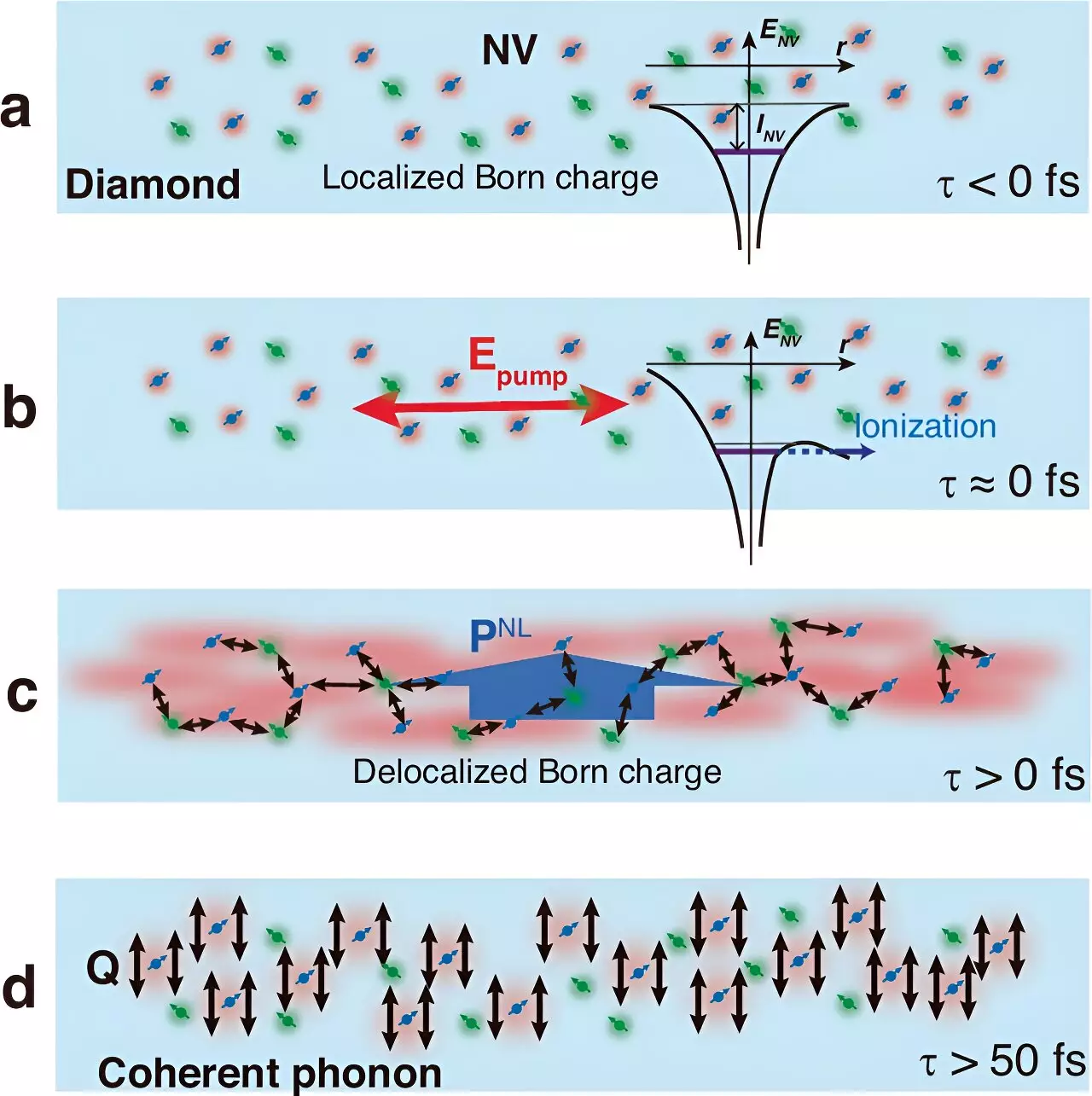Recent advancements in quantum materials research have shed light on the unique behaviors of quasiparticles, particularly polarons, in diamonds. A collaborative study spearheaded by a team from the University of Tsukuba has investigated the cooperative behaviors of polaron quasiparticles emerging due to the interactions between electrons and lattice vibrations. This groundbreaking research emphasizes the intricate relationship between crystallographic defects, specifically nitrogen-vacancy (N-V) centers, and quantum mechanics, showcasing the potential applications in high-precision sensing technology.
N-V centers are formed when nitrogen atoms infiltrate the carbon lattice of diamond, leading to vacancies adjacent to these impurities. This results in a unique defect that not only influences the optical properties of diamonds but also serves as a sensitive indicator of stimuli from the surrounding environment. The complex quantum states exhibited by N-V centers allow for remarkable responsiveness to variations in temperature and magnetic fields. Such features position NV centers as pivotal components in the development of advanced sensors capable of high sensitivity and spatial resolution.
Investigating Lattice Vibrations
The team’s research approach involved innovative experimentation with nanosheets populated by density-controlled NV centers. These ultra-thin sheets were strategically placed near high-purity diamond crystal surfaces and subjected to ultrashort laser pulses. This technique aimed to decode the subtle changes in lattice vibrations, capturing the vibrational dynamics with a heightened sensitivity. Remarkably, the study revealed an amplification of these lattice vibrations by around 13 times, despite the relatively meager density of NV centers present in the diamond structure. This discovery casts a new light on how defects within solid-state materials can significantly enhance their physical properties.
The research further delved into the charge states of NV centers through first-principles calculations, uncovering a distribution pattern of positive and negative charges. This computational analysis supports the notion that polaron quasiparticles, essentially free carriers encased within “phonon clouds,” have varying forms and behaviors in different materials. Historically, the existence of Fröhlich polarons—a type theorized nearly seventy years ago—was deemed improbable in diamonds. However, the findings of this study illustrate the emergence of Fröhlich polarons associated with NV centers, opening a trail of questions regarding their influence on diamond’s physical and electronic properties.
The implications of these findings extend far beyond theoretical physics. The ability to control and manipulate polarons in diamond offers exciting prospects for the evolution of quantum sensing technologies. By harnessing the unique characteristics of NV centers and their associated polarons, researchers can develop sensors with unprecedented levels of sensitivity. These innovations may one day lead to applications ranging from medical diagnostics to advanced imaging techniques within quantum computing frameworks.
The collaborative effort of the University of Tsukuba’s research group offers a pioneering view on the interactions between lattice vibrations and quasiparticles in diamonds. The understanding of how defects like N-V centers contribute to the formation of polarons sets the stage for future inquiries and technological advancements aimed at integrating quantum behavior into everyday applications. As research in this field progresses, the interplay of quantum mechanics and material science will undoubtedly continue to illuminate pathways towards novel discoveries and innovations.

